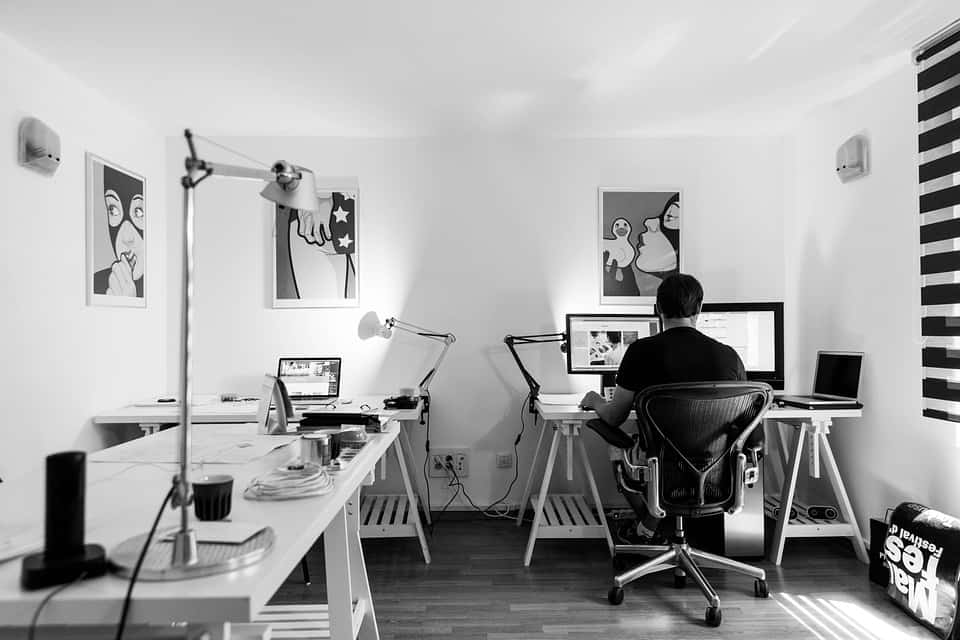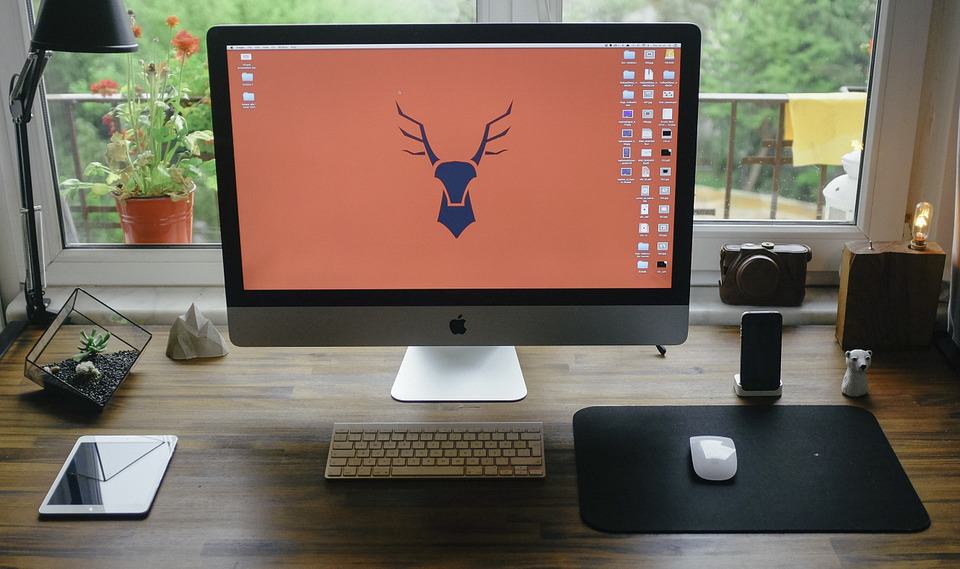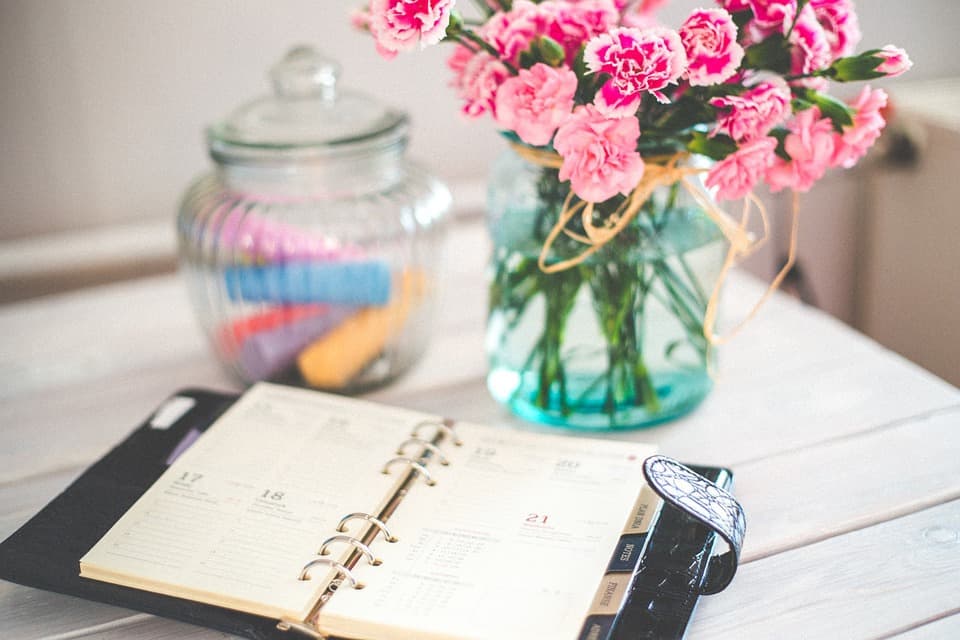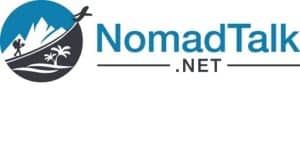Work. You may love it, you may hate it but it’s got to be done. One of the biggest challenges that you’re going to face in your digital nomad life is making time for work when there’s all that exciting new stuff to do right outside your window.
We’ve found that there are a few essential steps to take when creating the perfect digital nomad work routine that will let you get stuff done and free you up to enjoy your time in your new home too. They are separate work and your private life, buy the best equipment to work on, create a timed schedule and eliminate distractions.

Table of Contents
Wherever Possible Create Space Between Work And Your Private Life
As I type this, I realize I am being somewhat hypocritical, Megan and I are only in Hanoi for 2 months and we’ve booked a month at a time in nice homestays. That means we’re in a hotel-style room rather than an apartment (something that will change when we hit Da Nang where we’ve got 3 months in apartments to look forward to).
However, while working in your bedroom is probably OK for a month. It’s not a good idea long term. The last time I tried was in Cebu and it was pretty awful. You need a space to escape work. That should be where you sleep.
If you can’t set up in another room in your home to work in; then co-working, a café or even working outside your home can be a good alternative.
When you’re moving around a lot, as we intend to for the next year, it’s not practical to set up an office at home but if you come to a stop for a year or so – then it’s time to create a separate office space (which is what I did in Cambodia).
Digital nomads that constantly try to live and work in the same space will find that their private lives bleed into their work and their work bleeds into every aspect of their days. You will start to feel like you’ve been sent to jail where all you have to do is work.
Don’t Be Afraid To Buy The Equipment You Want To Work On

Every time I read about somebody who “runs their business from their smartphone”, I am pretty certain that I am reading about a liar.
Most digital nomads are going to need a laptop to work on. I carry a big ASUS ROG 17” Gaming Laptop. Why? Because it’s way better for my needs as a writer (I can put research up on one side of the screen and type on the other) than a smaller model would be.
It’s also better for my leisure needs given that I play a lot of PC Games.
Buy the equipment that you want and then work out a way to carry it with you, rather than buying things because of their portability and then working out how to use them.
Adding 2 hours a day to my workday flicking through different tabs is not a sensible trade-off for a smaller screen. It’s just not.
I did, however, shrink down my camera kit recently by a.) going mirrorless and b.) switching from full-frame to APS-C. That’s because while I love taking photos, I hate carrying around a big camera and I don’t sell my photos – so I don’t have to worry about maximum print sizes, etc.
If you want to use a Roost stand to improve your posture – do it. Though, I admit it wouldn’t help me much.
Plug in an external mouse if you want your laptop to be easier to use (I carry a Razer Mouse and a pro-gaming mouse mat everywhere – again it’s much more productive and far less irritating, the first thing I do when I buy a PC is go into the BIOS and disable the trackpad).
Seriously, digital nomads need to buy the hardware, software, etc. that makes working as pleasant as possible. When you work on the road, you want the work to be done as fast as possible and that means facilitating the easiest methods of working.
Develop An Actual Planned Routine For Your Working Day

I know this feels less like “being free to do what you want” and more like “being back in the office” but it’s a digital nomad essential. Your life becomes much easier when you set out a planned routine for yourself.
My current weekday routine looks something like this.
6.00 a.m. – Wake up – I don’t get much say in this, my body wakes up at 6 whether I like it or not. This is true whether I’ve had 4, 8 or 12 hours of sleep too.
6.15 a.m. – Scroll through my e-mail, social media, news feeds, etc. I am not a particularly social person at this point and my work’s normally not great either.
7.00 a.m. – Start work. Typically, I’ll get an hour’s work done at this point.
8.00 a.m. – Rouse the sleeping beast that is Megan and drag her down the coffee shop and buy some fresh bread.
8.30 a.m. – Back home and get some client work done.
12.00 p.m. – Lunchtime, if I haven’t already eaten the fresh bread. If I have, time for an hour’s TV or PC gaming.
1.00 p.m. – Mid-day nap. I am old. It’s hot. I have my reasons. An hour’s sleep in the middle of the day has become essential these last couple of years.
2.00 p.m. – Back to work this time on my websites.
6.00 p.m. (or sometimes 7.00 p.m) – time to quit for the day.
Now, I can vary my routine whenever I feel like. Nobody will know apart from me and nobody will care but this fairly basic structure allows me to get stuff done. It also gives me a way to hold myself accountable for getting stuff done.
Do I ever fail to get things done? Yes, but not very often and never when they’re important and a client wants them yesterday.
It is really easy for me to communicate what I am doing to other people too. There’s no grey area about what time is mine and what time belongs to other people. Any time not on the schedule belongs to Megan, obviously.
Eliminate External Distractions

While I’m working, I’m working. That means no phone calls. No e-mails unless they’re needed for the job. No social media. Nothing. Work is work.
And when I am done working; I’m done. That still means no phone calls, no e-mails, no social media, etc.
Yes, it’s entirely possible to eliminate distractions from your digital nomad life with a little discipline. (Alright a lot of discipline in my case, I really like being distracted).
How do I do it?
- I switch off my phone and apart from one instant messenger client; I close everything else down on the desktop.
- I use a plugin for Chrome to block all sites that could be distracting. Then if I am tempted, I get told to get lost by my browser. This is really handy, though you have to resist the urge to go in and change the plugin settings.
- I communicate my schedule as necessary. The best thing about being a digital nomad freelancer is that nobody else owns your time. While I am always happy to chat to a client or see a friend; I am far less happy to have them constantly interrupt my time.
- Switch off all notifications on every device you own. I can tell you for free that you do not need to be told every time somebody Tweets or somebody likes a post on Facebook.
Your time is your time. If you’re an employee, you may need to talk to your boss about how you can work in a distraction-free environment but if you’re your own boss – you can create that environment immediately.
The fewer distractions from work, the faster the work is done, the faster you can get out and see your new location (or in my case, the faster I can go and have a beer and watch the world roll by with Megan).
Conclusion: Creating The Ideal Digital Nomad Work Routine

You don’t need to fuss over this too much or overthink it. The idea is simple: use 4 easy adjustments to your working life to make your remote working more efficient.
Digital nomads who work efficiently have more time for fun. Fun is what made us choose this life in the first place, right?
